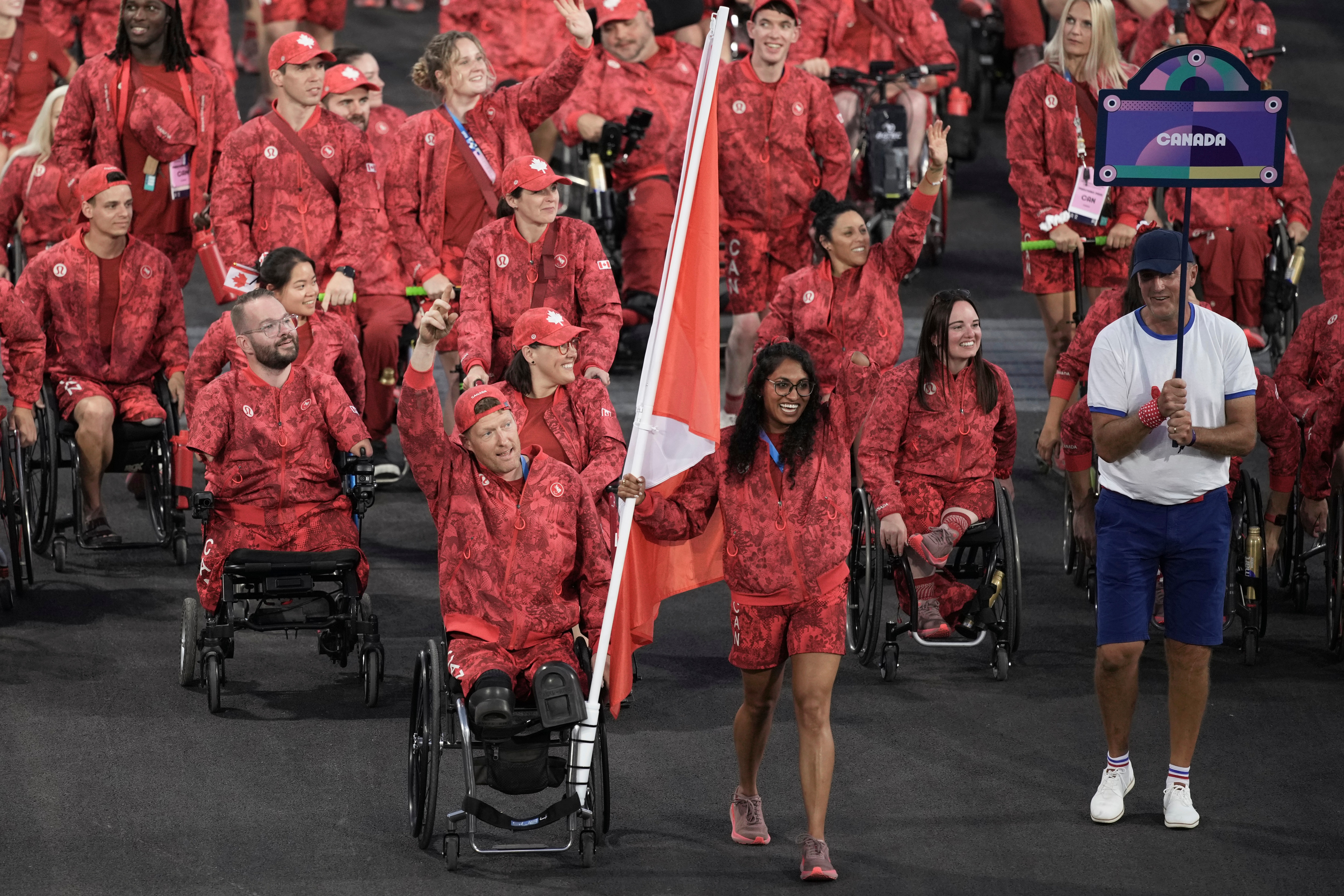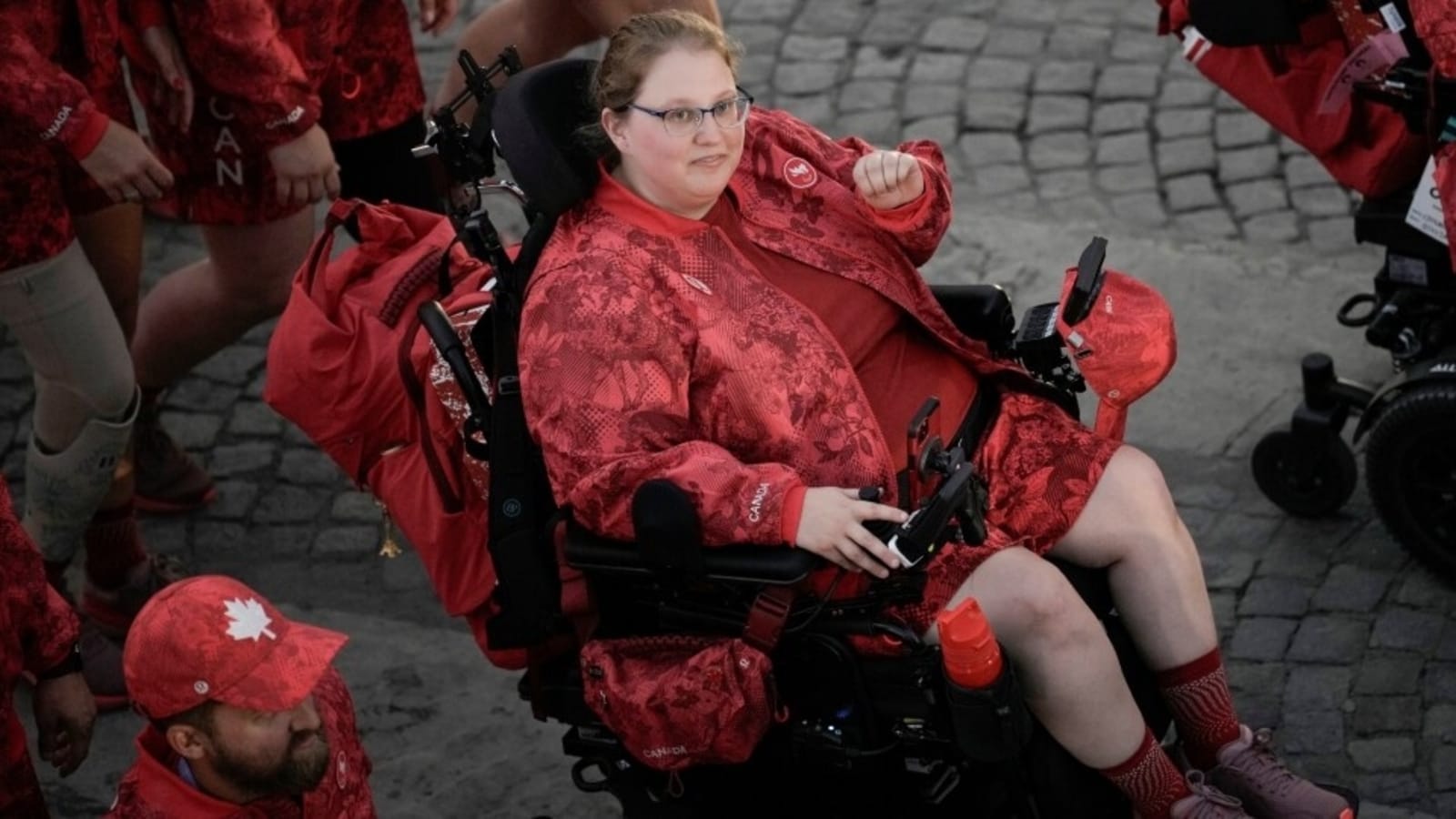Three years ago, when Team Canada appeared at the opening ceremony of the Tokyo 2020 Olympic Games, Olympics and Paralympic GamesThe athletes wore smart white jeans. They may have looked good, but for some Paralympians on the team, they were a challenge.
Fashion is changing
For example, Alison Levine, a Paralympic athlete who competes in boccia, couldn’t wear jeans because they would dig into her skin in a wheelchair. They didn’t have an elastic waistband and were difficult to put on and take off.
“There was no way I was going to wear them,” says Levine, who had to find something else that would work and not look too different. “You don’t want to look different because of your disability“Levine says. “We don’t want it to be like, ‘Team Canada plus you.’”
This year, things are different. At the Paralympic Games opening ceremony in Paris, Levine and his teammates wore bright red jackets with features like magnetic closures that make them easy for everyone, disabled or not. And there was an option for carpenter pants with a seat that were designed with Levine in mind, even called the “Alison pants.”
Levine sees the design process, in which clothing company Lululemon began interviewing her and others for guidance three years ago, as a significant advancement not only in Olympics but in the broader area of what is known as adaptive or inclusive fashion, where fashion brands are beginning – albeit slowly – to respond to the needs of disabled people and recognise that they are an important economic force.
“People want to look good,” says Levine, 34, who has a degenerative neuromuscular disorder. “It doesn’t matter if you’re disabled or not. A lot of times when you’re disabled, you have to sacrifice your appearance for what works for you or for comfort. But the disability movement is getting bolder and stronger and saying we’re not going to accept these things anymore.”
Levine acknowledges that she and her fellow Canadians are among the luckiest and that most athletes don’t have the luxury of having a major apparel company design their uniforms and ask for advice. Lululemon, which has a deal with Team Canada for all four Games, designed all of the uniforms for Olympic and Paralympic athletes off the field — for the opening and closing ceremonies, attire in the village, medal ceremonies, media appearances and travel.

Audrey Reilly, creative director for Team Canada at Lululemon, says she was surprised to discover that Levine primarily wore scrubs, for comfort, when training or competing. That led to new designs for both seated and standing athletes. “All athletes want to look the same,” Reilly says. “They want to feel the same.”
The garment she called the “Alison pant” has pockets on the shins, so a wheelchair athlete can easily access them. Levine says it was “insane” to hear a garment named after her, but mostly she was happy to be able to wear what others were wearing: “You feel like you’re really part of the team.”
Alison Brown, a podcaster who has been covering the Olympics for years, says this Olympic cycle is the first in which she’s seen signs that adaptive fashion is taking hold. She was struck by both Lululemon’s uniform introduction in the spring and Nike’s presentation for Team USA, which featured models in wheelchairs or with prosthetics.
“It’s so simple, yet so impactful,” says Brown, who also notes that most teams don’t have the resources or institutional setup like Team USA and Team Canada, where Olympic and Paralympic athletes are part of the same structure.
For Mindy Scheier, who has been advocating for better clothing options for the disabled for more than a decade, it’s no surprise that 2024 is the year the issue becomes visible at the Olympics, not to mention Paris, the fashion capital of the world.
“The paradigm has changed and brands are starting to see this as a business opportunity,” Scheier says. “The momentum has shifted to the Olympic and Paralympic Games because there has been a huge leap forward in the industry.”
Scheier began her advocacy work a decade ago when her eight-year-old son, who was born with muscular dystrophy, wanted to wear jeans to school instead of sweatpants. She couldn’t find any options. A fashion designer, Scheier has set up a foundation and a consulting agency and works with designer brands and retailers to embrace adaptive fashion.
Ten years ago, she had no partners; now she has many, from luxury brand Tommy Hilfiger, which has its own line of adaptive clothing, Tommy Adaptive, to Target, Victoria’s Secret and others. Scheier’s foundation, Runway of Dreams, will stage a show this month at New York Fashion Week featuring about 60 models with various disabilities.
“This is a vocal population that wants to be seen as consumers,” Scheier says.
Jessica Long considers herself a fashion fanatic. Long, 32, has dominated Paralympic swimming on Team USA and is now competing in her sixth Paralympics. She started winning gold medals at age 12. As a double amputee, one of the hardest things for her growing up, she says, was finding shoes that worked with her prosthetics.
“There aren’t many things in my life that make me feel very disabled, but buying shoes, and buying clothes in general, has always been the hardest,” she says.
As she grew older and gained confidence, it became easier, but she says finding shoes remains the biggest challenge: “What people may not realise is that shoes can completely ruin the way I walk… if they are too heavy.”
She is grateful that the United States Olympic and Paralympic Committee and sponsor Ralph Lauren, which designed the apparel for the opening and closing ceremonies, surveyed para-athletes a year ago and asked them what works best.
“I’ve seen a huge improvement in our mobility,” Long said in an interview before the Paralympics. “I think it’s those little pieces that mean the most to Paralympians. I think it’s going to be really exciting when we all get dressed up.”
Disclaimer:
The information contained in this post is for general information purposes only. We make no representations or warranties of any kind, express or implied, about the completeness, accuracy, reliability, suitability or availability with respect to the website or the information, products, services, or related graphics contained on the post for any purpose.
We respect the intellectual property rights of content creators. If you are the owner of any material featured on our website and have concerns about its use, please contact us. We are committed to addressing any copyright issues promptly and will remove any material within 2 days of receiving a request from the rightful owner.

